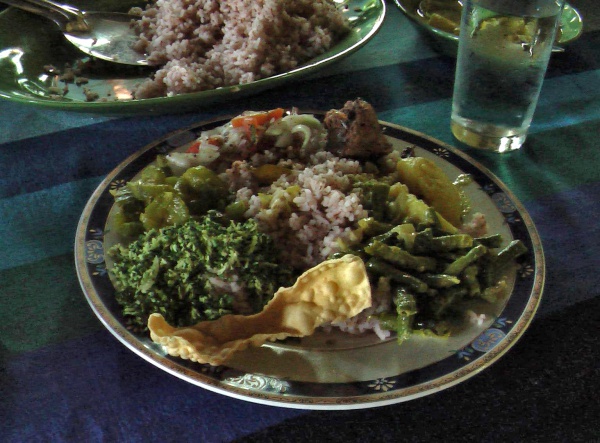Facts About Sri Lankan cuisine
Sri Lankan cuisine is a vibrant amalgamation of flavors and traditions, molded by the island's rich history, culture, and geographical positioning. It tantalizes the senses with an array of herbs, spices, seafood, and tropical fruits. The core ingredients? Picture rice, coconut, and seafood, which serve as the foundation for numerous dishes. This culinary opulence has evolved over centuries, influenced by foreign traders and neighboring regions, creating a synergy of local traditions and global flavors.
Each region of Sri Lanka brings its own culinary distinctiveness. Coastal areas are abundant in seafood, while Tamil cuisine heavily draws from South Indian tastes. In the hill country, the Kandyan Sinhalese cuisine highlights a variety of locally sourced vegetables and fruits.
Key ingredients in Sri Lankan cooking include true cinnamon, black pepper, coconut, Maldive fish, various types of rice, and an assortment of spices and herbs. Unique elements such as goraka (a sour fruit), pandan leaf, and kithul palm syrup jaggery contribute to its distinctive flavor profile.
Essential Sri Lankan dishes include rice and curry, kiribath (milk rice), kottu (a chopped roti stir-fry), hoppers (bowl-shaped pancakes), string hoppers (steamed rice noodle nests), lamprais (rice and accompaniments baked in banana leaves), kool (a seafood broth), pittu (steamed rice and coconut cylinders), roti, sambal (spicy condiment), Malay achcharu (pickles), and Chinese chili paste. For those with a penchant for sweets, festival favorites like kevum (oil cakes), athiraha (rice flour sweets), bibikkan (coconut cake), and watalappam (coconut custard pudding) are a must-try.
Furthermore, do not overlook the "short eats" – a variety of snacks ideal for breakfast or a midday bite, available at local eateries. When it comes to beverages, Sri Lankans savor faluda (a sweet, milky drink), fresh fruit juice, tea, toddy (a palm wine), arrack (a distilled spirit), and refreshing king coconut water.

 India
India